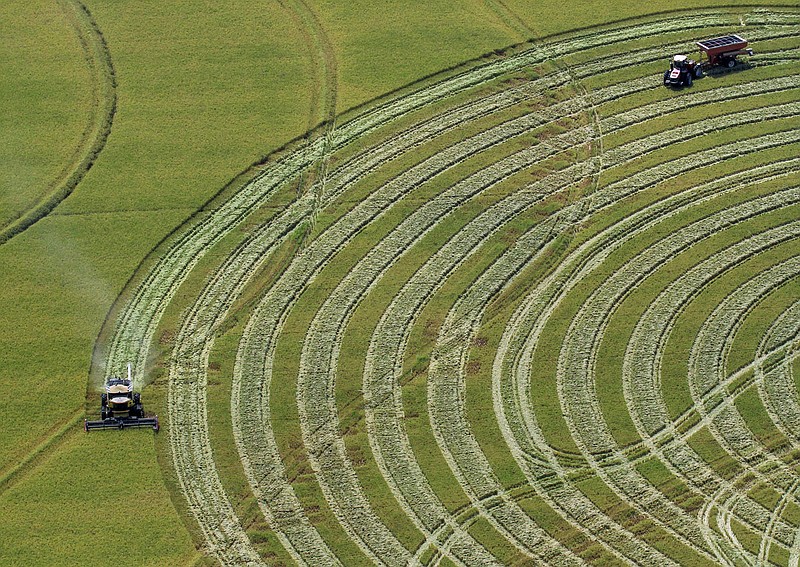The year 2020 has been extraordinary, by almost any measure. And although the past 12 months have been filled with many challenges and setbacks, some sectors of the economy -- including many Arkansas row crops -- had better outcomes than anyone could have predicted.
Across the state, the average annual rainfall was more than doubled in the first third of 2020, with the Delta region getting more than 11 inches of rainfall in March alone.
In March, the coronavirus pandemic began sweeping through the United States, striking first on the coasts, then slowly working its way toward the central part of the country. As businesses both in and out of the agricultural sector began shutting their doors, the federal government instituted travel restrictions that affected the availability of H2-A guest workers and other aspects of the available labor pool.
In April, the corn, rice and cotton crops had some of the slowest planting progress in recent history, as persistent rains, paired with relatively cool spring conditions prevented fields from drying quickly when the rare clear window did open.
There were tropical storms, planting delays, slow growth, and a harvest that practically arrived for dinner at midnight.
And yet, somehow, many of the state's growers emerged as well as, and in some cases, better off than any other year in the past decade.
Scott Stiles, extension economist for the University of Arkansas System's Agriculture Division, said many of the state's agricultural outcomes for 2020, all things considered, were remarkable.
"Considering the planting and harvesting weather challenges, yields for all crops are expected to be good," Stiles said. "For instance, [the National Agricultural Statistics Service] currently projects the state's cotton yield to be a record 1,200 pounds per acre."
That marked an increase of about 15 pounds per acre, and handily outshone the national average this year of 893 pounds per acre. The National Agricultural Statistics Service is an agency of the U.S. Department of Agriculture.
Arkansas peanuts, which had a reduction of about 5.6% percent in average yield, falling to about 4,900 pounds per acre, nevertheless had a substantial increase in overall production, from about 171.6 million pounds to about 191.1 million pounds.
Arkansas rice, with a final planted acreage of about 1.44 million acres, had mild increases in yields, rising to about 7,500 pounds per acre, about 20 pounds higher than 2019's average yield. Soybeans, the state's No. 1 crop, also had a slight increase in yield, advancing from 49 bushels per acre in 2019 to 50 bushels per acre as of Nov. 1.
Arkansas corn, which had a significant drop in harvested acreage, from about 735,000 acres in 2019 to about 605,000 acres in 2020, nevertheless had an increased yield per acre, rising from 175 bushels per acre last year to 181 bushels per acre as of Nov. 1.
A GLIMMER OF HOPE
As the country marches headlong toward 2021, Stiles said the availability of effective coronavirus vaccines may reignite portions of the global economic engine that have slowed to a crawl.
"A glimmer of hope on the vaccine front has been supportive to energy prices," Stiles said. He said economists expect West Texas Intermediate crude oil process to average about $7 a barrel higher in 2021, triggering higher fuel prices across the board.
Prices are already rising in grain markets.
"A tremendous price rally in corn and soybeans has been underway since mid-August," Stiles said. "Historically, sharp rallies of this magnitude in grains tend to pull fertilizer prices higher. A higher price trend is already underway in the macronutrients."
Supplies of corn and soybeans in the United States and the world have shrunk significantly over the past few months, Stiles said, causing prices for both commodities to rise.
"Wheat prices have been attractive as well this fall, offering growers opportunities to forward price at $6 or better," he said. "We expect wheat acres to be up some. We could see a reduction in cotton acres in 2021 if cotton prices remain at or below current levels, near 70 cents. By comparison, corn and soybean returns are slightly better than cotton at today's price relationships.
"There are enough global weather concerns today that could lift corn and soybeans price further over the next few months," he said.
To learn more about extension programs in Arkansas, contact a local Cooperative Extension Service agent or visit www.uaex.edu. Follow the agency on Twitter at @UAEX_edu.
Ryan McGeeney is with the University of Arkansas System Division of Agriculture.

